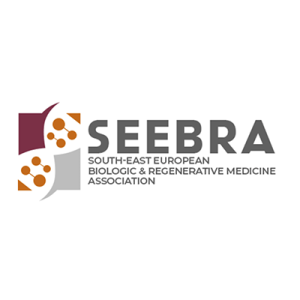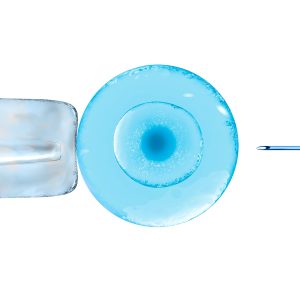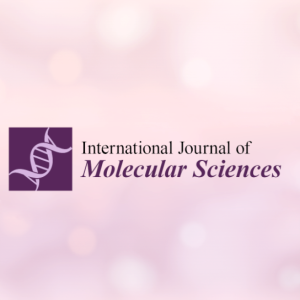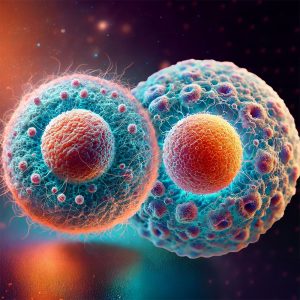If you’re keeping up with advancements in reproductive medicine, you’ve likely heard about exosomes — “miniature couriers” of our cells that carry vital biomolecules (proteins, RNA, lipids) and influence various bodily processes. However, their specific role and application in treating infertility and other gynecological conditions are only beginning to be explored.
Below, you’ll find out why experts believe this therapy has the potential to revolutionize reproductive medicine and what challenges still lie ahead.
Why Are Exosomes So Intriguing?
Exosomes are extracellular vesicles that act as “tiny messengers” between different cells. Imagine them as “drones” carrying valuable cargo—proteins, RNA, and lipids—directly to target cells. When it comes to reproductive health, experts see them as a potentially powerful tool for:
- Ovarian Rejuvenation: Exosomes may “awaken” dormant follicles, improve the ovarian microenvironment, and provide new hope for women with diminished ovarian reserve or those approaching menopause.
- Improving Oocyte Quality: These “drones” can influence immune responses, mitochondrial function, and oxidative stress in oocytes, increasing the chances of successful fertilization.
- Endometrial Regeneration: For women struggling with a thin or damaged uterine lining, exosomes may accelerate tissue repair and enhance embryo implantation.
- Reducing Inflammation: With their ability to modulate the immune system, exosomes could be a valuable ally in reducing chronic inflammation, including conditions like endometriosis and PCOS.
- Supporting Assisted Reproduction: In combination with IVF treatments, exosomes could improve implantation rates and pregnancy outcomes.
What Are the Biggest Challenges?
While the concept sounds fantastic, exosome therapy is not a “magic wand.” Here are some hurdles that still need to be overcome:
Isolation and Specificity
- Different cellular sources yield exosomes with varying compositions, complicating standardization.
- Current methods (e.g., ultracentrifugation) often fail to produce sufficiently “pure” samples.
Standardization
- Precise protocols for exosome isolation, storage, and delivery must be established.
- Optimal dosages and methods of administration remain unclear.
Regulatory and Ethical Issues
- Exosome therapy is still experimental and has not been approved by institutions like the EMA or FDA.
- The use of embryonic or fetal cell sources raises significant ethical debates.
Cost and Accessibility
- The production and technologies ensuring exosome quality are still very expensive.
Unpredictability of Therapeutic Effects
- Individuals respond differently to this therapy, making outcomes difficult to predict.
Our Approach: How Exosomes Fit Best
The Right Cell Source – A Key to Success
- Exosomes derived from mesenchymal and hematopoietic stem cells show the greatest potential due to their established use in regenerative medicine.
Combining with Existing Therapies
- Exosomes are often viewed as “effect enhancers,” making them suitable to work “hand-in-hand” with IVF and other established procedures.
For Now – Stem Cells Take the Lead
- Since exosome therapy is still in its infancy, treatments using whole stem cells remain a more reliable and practical choice.
What Can We Expect in the Future?
- Technological Advancements
- New microfluidic systems and innovative isolation methods promise purer and more efficient exosomes.
- The development of “synthetic” exosomes could allow for precise control of their content and targeted treatment.
- Clinical Trials
-
- Rigorous and extensive clinical trials are essential to confirm the benefits of exosome therapy.
- Only with this evidence can regulatory agencies consider approval.
- Personalized Medicine
-
- Imagine therapy tailored specifically to your needs and genetic profile.
- Exosomes, adapted to individual problems and patient biology, could enable truly personalized treatment.
Conclusion – Exosome therapy in reproductive medicine
Exosome therapy appears to be an exciting new trend in reproductive medicine, with immense potential for improving oocyte quality, regenerating the endometrium, and reducing inflammation. However, due to current challenges—from standardization to regulatory hurdles—stem cell therapies remain the more reliable option for now. With further research, technological advancements, and multidisciplinary collaboration, exosomes are expected to become a significant part of future infertility treatments and other reproductive health solutions.
Academician Prof Aleksandar Ljubić, MD, PhD
Academician Aleksandar Ljubić, MD PhD, is a gynecologist recognized for his expertise in reproductive medicine and high-risk pregnancies. He pioneered invasive ultrasound-guided fetal procedures, direct maturation of fetal lungs, inventor of the method of perinatal hearing screening, non-surgical fibroids treatment and advanced NOTES laparoscopic procedures. Professor’s recent research areas include reproductive and perinatal biotechnology, regenerative medicine, assisted reproduction, minimally invasive reproductive surgery, and tumor biology. Read full bio >






